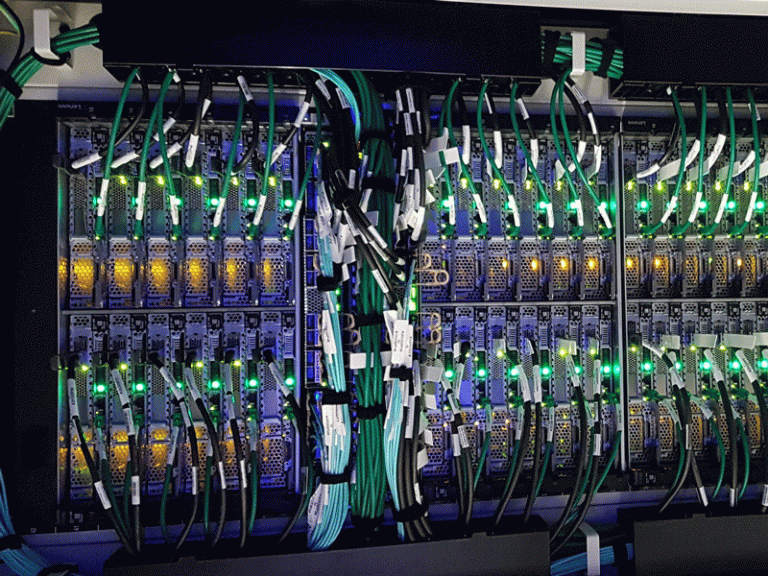Meet Michael, the Supercomputer Designed to Accelerate UK Research for EV Batteries
21 November 2018
First research challenges include the fast-charging of batteries, low temperature operation and thermal management of cells within battery packs

A new supercomputer designed to speed up research on two of the UK’s most important battery research projects has been installed at University College London (UCL). Named Michael, after the UK’s most famous battery scientist, Michael Faraday, the supercomputer will reach 265 teraflops at peak performance.
Michael will flex its computing muscle to assist over 110 researchers focused on creating new models for battery systems and researching next-generation, solid-state batteries. The supercomputer offers much needed capacity to UK researchers who today are working to solve some of the thorniest problems in energy storage. The Faraday Institution, funded by UK Research and Innovation (UKRI) through the UK Government’s Industrial Strategy Challenge Fund, purchased the £1.6 million supercomputer.
UK Research and Innovation Chief Executive, Professor Sir Mark Walport, said: “This new supercomputer will be a valuable resource for the UK’s battery researchers, providing them with the insight necessary to improve battery performance and lifetime and reduce costs.”
Dr Jacqueline Edge of Imperial College London, and project lead of the Faraday Institution’s Multiscale Modelling project, said, “Our team is excited to have access to this new high-performance computer, fully dedicated to accelerating our battery research. This state-of-the-art facility will be crucial in accelerating the step-change improvements in the UK’s battery modelling capability that our project is targeting.”
Developing more accurate simulations of batteries will give researchers and their industry partners the ability to design advanced batteries without the cost of creating numerous prototypes to test every new material, or new type and configuration of the cells that make up a battery pack. Simulations also offer valuable insight into how existing materials work, enabling scientists to identify the limiting processes and develop rational strategies to overcome them. Models for control will enable battery lifetime and performance to be improved and reduce the cost of existing and future packs.
Of note to prospective owners of electric vehicles, improved computer simulations of battery performance will increase the rate at which improvements, for example, to vehicle cost, charging rates or range, are made to commercial models, accelerating the rate of mass-market adoption.
Using Michael, researchers will routinely be able to run their simulations overnight, rather than having to wait, in some cases, weeks or even months, before being able to do so. As such, Michael will accelerate the research process and shorten the timescale over which advances can be made. The first challenges to be tackled by the team include the fast-charging of batteries, low temperature operation and thermal management of cells within battery packs.
The new supercomputer will be exclusively dedicated to Faraday Institution projects. Around 85% of the available computing time initially has been allocated to researchers on the Multi-scale Modelling project, who will access the facility from UCL, Imperial College London, and five other universities in the UK.
Professor David Scanlon (UCL Chemistry), academic lead on the purchase of Michael, said, "The launch of Michael is a very exciting milestone for the Faraday Institution modelling community, particularly as it already has over one hundred users. Battery research in the UK and worldwide will benefit massively from this investment and we are all looking forward to seeing the interesting breakthroughs that will emanate from this supercomputer."
The aim of the Faraday Institution’s battery modelling system project is to advance current computer models and develop design tools that can accurately predict the performance and lifetime of existing and future batteries. While computer models already exist from the atomic scale up to the dimensions of a battery pack, assessing processes that occur from nanoseconds to the years over which an electric vehicle operates, these models are not linked together and often lack the accuracy required for understanding the unique phenomena occurring within batteries.
Michael is being housed alongside the EPSRC Hub for Materials and Molecular Modelling (known as Thomas). While the Faraday Institution’s supercomputer will be on a separate platform, it will share the same architecture and software stack as Thomas, making it easier for researchers to move existing models and research over to the new platform.
 Close
Close

